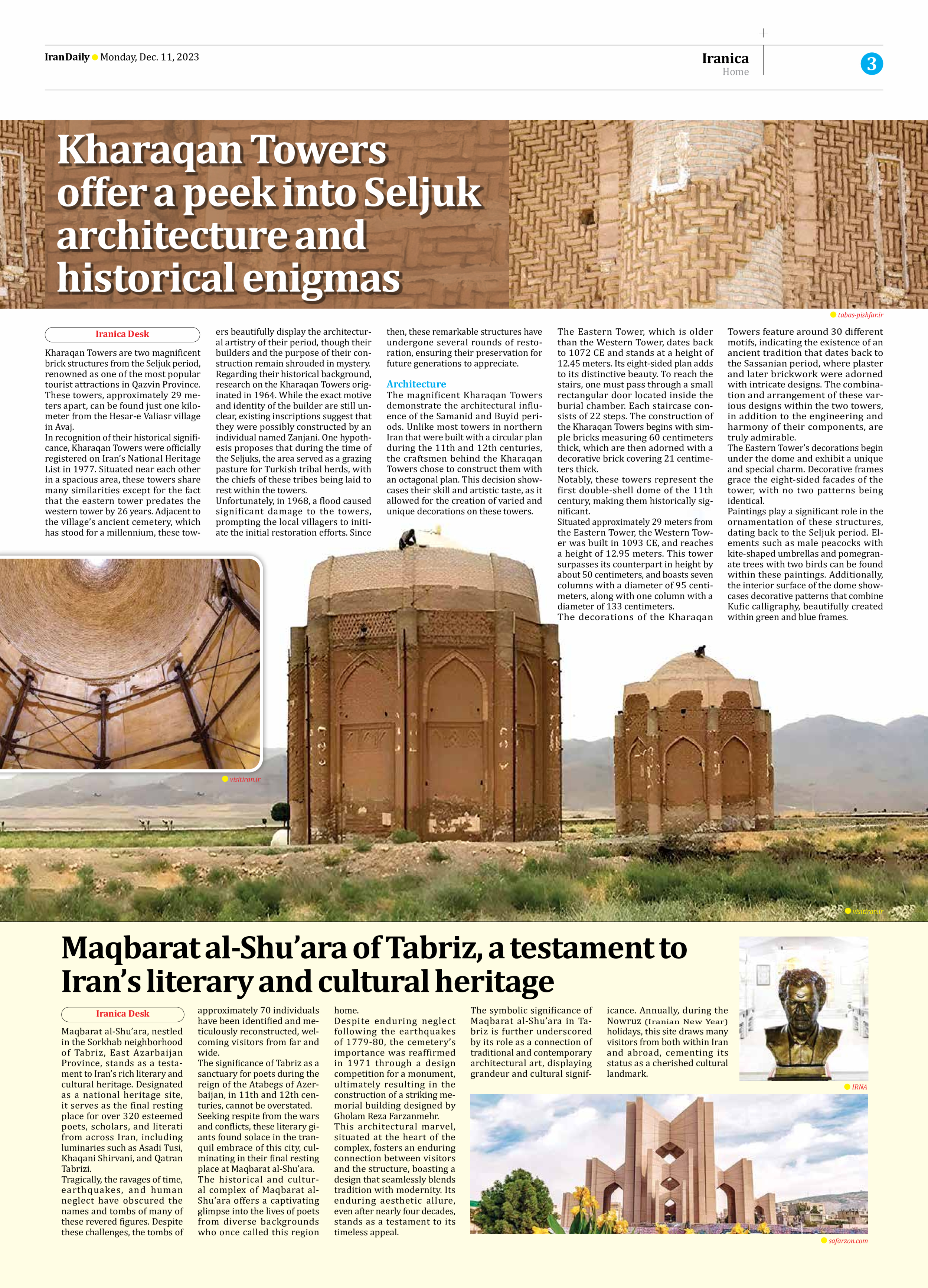
Maqbarat al-Shu’ara of Tabriz, a testament to Iran’s literary and cultural heritage
Maqbarat al-Shu’ara, nestled in the Sorkhab neighborhood of Tabriz, East Azarbaijan Province, stands as a testament to Iran’s rich literary and cultural heritage. Designated as a national heritage site, it serves as the final resting place for over 320 esteemed poets, scholars, and literati from across Iran, including luminaries such as Asadi Tusi, Khaqani Shirvani, and Qatran Tabrizi.
Tragically, the ravages of time, earthquakes, and human neglect have obscured the names and tombs of many of these revered figures. Despite these challenges, the tombs of approximately 70 individuals have been identified and meticulously reconstructed, welcoming visitors from far and wide.
The significance of Tabriz as a sanctuary for poets during the reign of the Atabegs of Azerbaijan, in 11th and 12th centuries, cannot be overstated.
Seeking respite from the wars and conflicts, these literary giants found solace in the tranquil embrace of this city, culminating in their final resting place at Maqbarat al-Shu’ara.
The historical and cultural complex of Maqbarat al-Shu’ara offers a captivating glimpse into the lives of poets from diverse backgrounds who once called this region home.
Despite enduring neglect following the earthquakes of 1779-80, the cemetery’s importance was reaffirmed in 1971 through a design competition for a monument, ultimately resulting in the construction of a striking memorial building designed by Gholam Reza Farzanmehr.
This architectural marvel, situated at the heart of the complex, fosters an enduring connection between visitors and the structure, boasting a design that seamlessly blends tradition with modernity. Its enduring aesthetic allure, even after nearly four decades, stands as a testament to its timeless appeal.
The symbolic significance of Maqbarat al-Shu’ara in Tabriz is further underscored by its role as a connection of traditional and contemporary architectural art, displaying grandeur and cultural significance. Annually, during the Nowruz (Iranian New Year) holidays, this site draws many visitors from both within Iran and abroad, cementing its status as a cherished cultural landmark.







